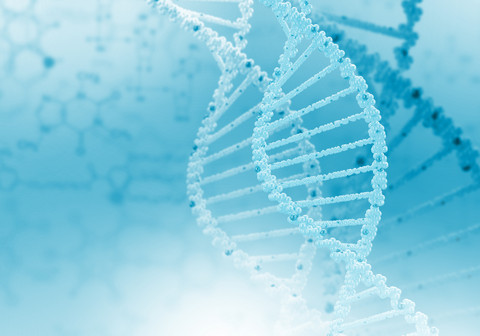Researchers find 100 possible targets for treatment of schizophrenia
Genetic researchersfrom 34 countries have joined forces to take a closer look at the biological causes of schizophrenia. In an article in Nature, researchers from Aarhus are among those pinpointing 80 new genes linked to the development of schizophrenia. Their research may pave the way for possible new treatments.

The biggest mapping of biological causes of schizophrenia to date has just been published in one of the world's leading scientific journals, Nature.
The study by more than 300 authors, including researchers from Aarhus University, have identified more than 100 genes associated with the development of the serious mental illness. More than 80 of these genes have not previously been associated with schizophrenia. And the genes can potentially show the way to molecules which may be targeted by future treatments.
Also, the researchers have shown that the identified genes are both very active in brain cells, and also active in cells in the immune system, for example in the so-called B lymphocytes.
"The fact that we can link schizophrenia to the brain probably comes as no big surprise. It was more surprising to see that the genes are active in the immune system, even though it supports an earlier scientific hypothesis," says Professor of Medical Genetics Anders Børglum from Aarhus University.
Clear risk profile
Last year, the researchers found 13 genes that are linked to the development of the disease, which to a large extent is due to hereditary factors. And with the new, very comprehensive study, they believe to have identified many of the most prominent genetic variants:
"We believe that several thousand of the 10 million common genetic variants may be associated with the development of schizophrenia. We have now identified more than 100 of them, and for each gene we can develop an understanding of the biological processes. It is a strong starting point for finding new paths towards treating the disease," says Anders Børglum.
His conclusion is that carriers of many of the involved genetic variants have a 10 to 20 times greater risk of developing schizophrenia than those carrying only a few of them.
"It means that we can make a clear division into risk profiles based on genetic analyses," he says.
1,800 Danish DNA profiles tested
The study is the largest genetic study ever of biological causes of schizophrenia. A total of 52 different studies of population groups from 34 countries form part of the study, and the researchers from Aarhus have contributed studies of DNA from 900 healthy and 900 ill Danes via the Danish bio banks.
Their DNA has been examined for approx. 10 million genetic variants, and this corresponds to all frequently occurring variants in a population.
Up to 30,000 Danes suffer from schizophrenia, and about 1% of the population will at some point in their lives develop the disease.
- Read the article “Biological insights from 108 schizophrenia-associated genetic loci”in Nature
Facts
- More than 300 authors from 34 countries are behind the article in Nature.
- The study is based on DNA from a total of approx. 150,000 persons.
- The dopamine receptor DRD2, which is a known molecular target for treatment, is one of the new genes identified by the researchers. Several of the other 83 new gene regions may contain other molecular targets for treatment.
- The Danish researchers are members of the international research consortium "Schizophrenia Working Group of the Psychiatric Genomics Consortium".
- The participating research teams from Aarhus University are headed by Professor Anders Børglum, Department of Biomedicine, Professor Ole Mors, Department of Clinical Medicine, and Professor Preben Bo Mortensen, Department of Economics and Business – all from the national research project iPSYCH and the interdisciplinary research centre iSEQ at Aarhus University. They have, for example, worked with Statens Serum Institut (SSI).
Further information
Professor Anders Børglum
Aarhus University, Department of Biomedicine
Direct tel.: +45 8716 7768
Mobile: +45 6020 2720.
anders@biomed.au.dk